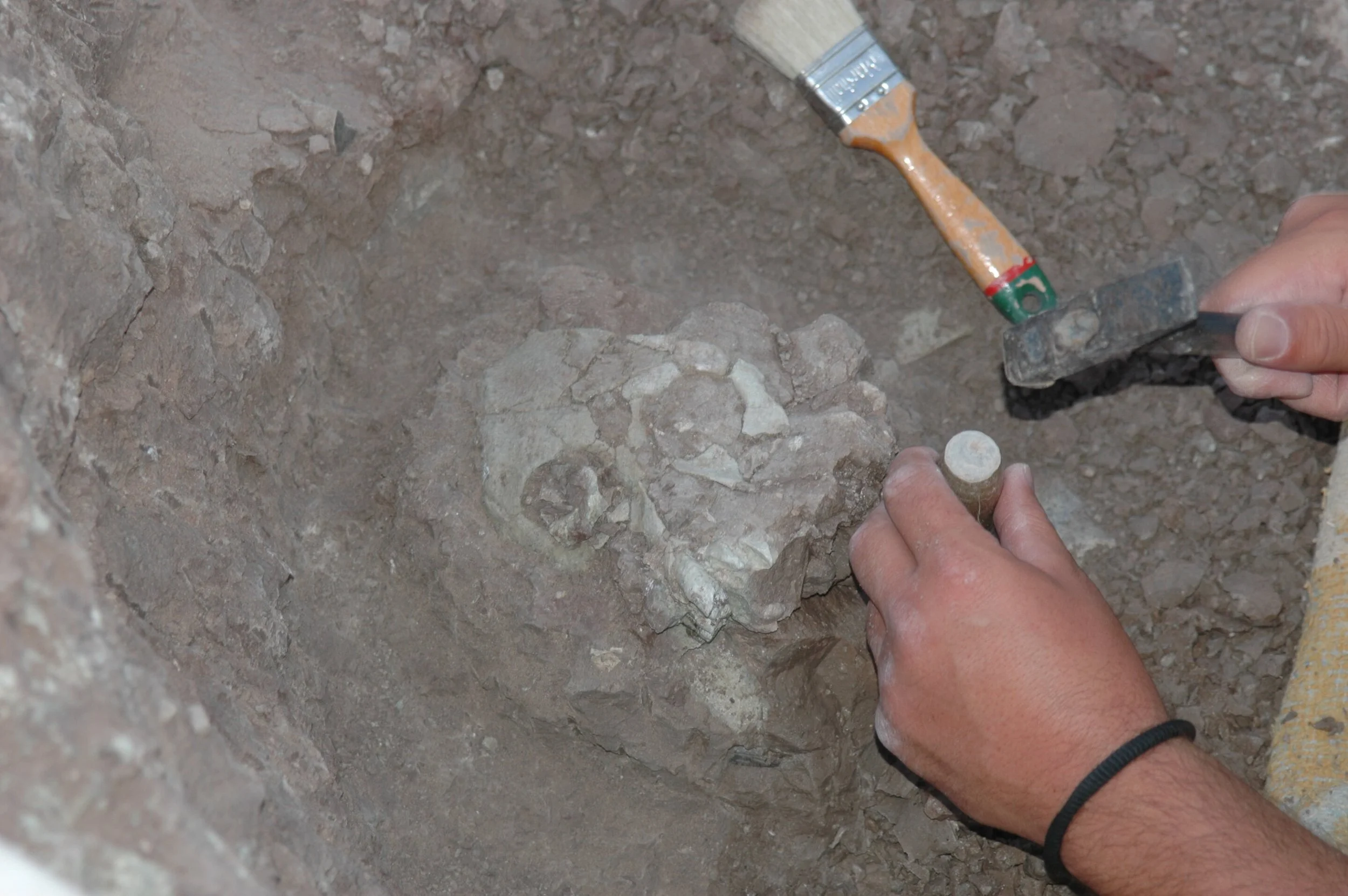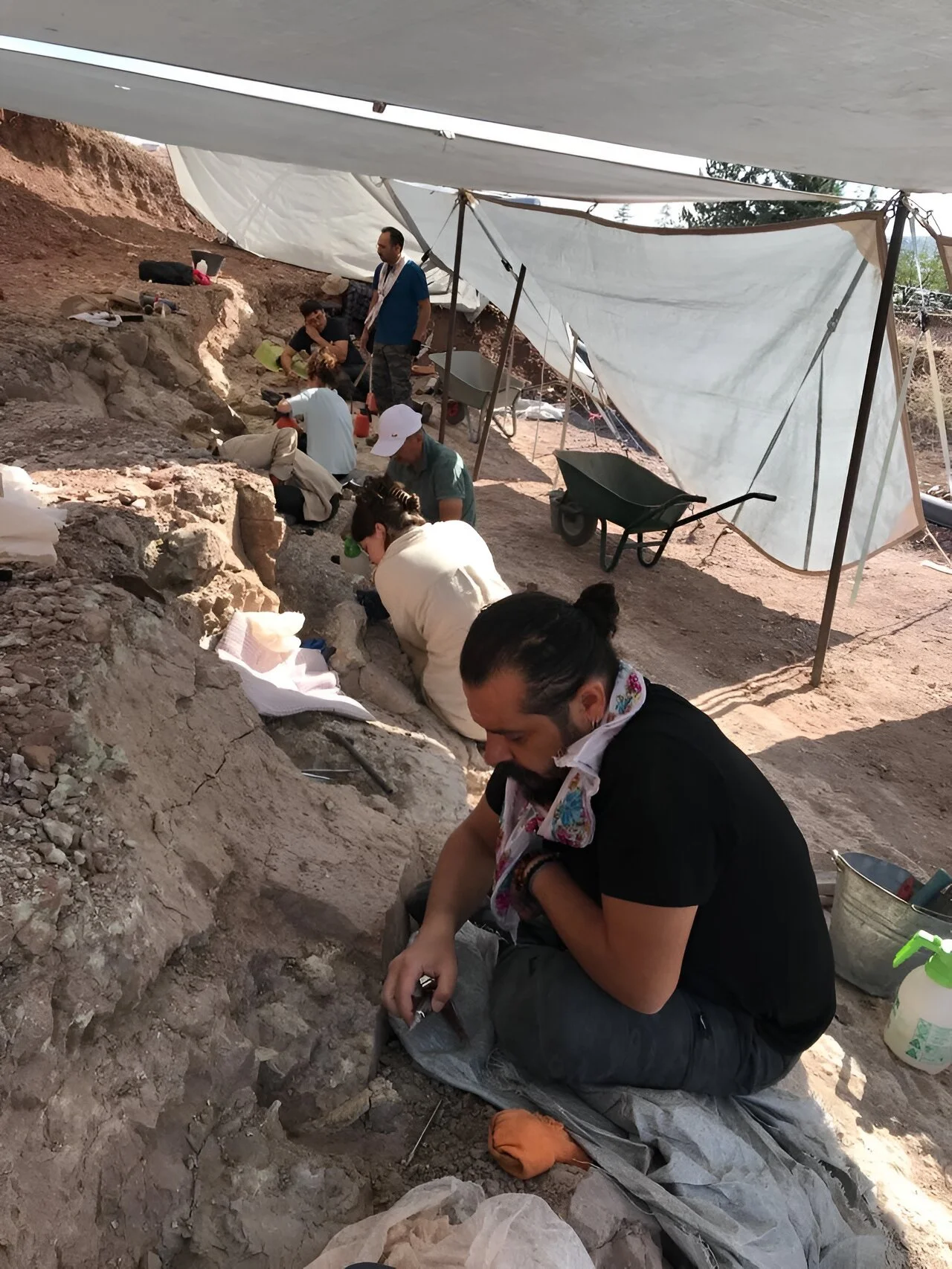Long-held beliefs about the origins of humans are being called into question by the discovery of a new fossilized ape at an 8.7 million-year-old site in Türkiye. This discovery lends support to the theory that African apes and humans originated in Europe before moving there between nine and seven million years ago.
A new face and partial brain case of Anadoluvius turkae, a fossil hominine—the group that includes African apes and humans—from the Çorakyerler fossil site located in Central Anatolia, Türkiye. Credit: Sevim-Erol, A., Begun, D.R., Sözer, Ç.S. et al.
With the help of the Ministry of Culture and Tourism in Türkiye, a newly identified ape named Anadoluvius turkae was recovered from the Çorakyerler fossil locality near Çankırı. Analysis of this ape's remains has revealed that it is a diverse member of the first known radiation of early hominines, which includes the African apes (chimpanzees, bonobos, and gorillas), humans, and their fossil ancestors.
The results are detailed in a paper co-authored by an international team of academics led by Professor David Begun at the University of Toronto (U of T) and Professor Ayla Sevim Erol at Ankara University, which was published today in Communications Biology.
According to Begun, a professor in the Department of Anthropology in the Faculty of Arts & Science at U of T, "our findings further suggest that hominines not only evolved in western and central Europe but spent over five million years evolving there and spreading to the eastern Mediterranean before eventually dispersing into Africa, probably as a consequence of changing environments and diminishing forests." This is most likely due to shifting environments and disappearing forests. Currently, only Europe and Anatolia have members of this radiation that Anadoluvius is a part of identified.
The finding is based on study of a partial skull discovered at the site in 2015 that is remarkably well-preserved and has the majority of the facial anatomy and the front section of the brain case.
Excavation of the Anadoluvius turkae fossil, a significantly well-preserved partial cranium uncovered at the Çorakyerler fossil site in Türkiye in 2015. The fossil includes most of the facial structure and the front part of the brain case. Credit: Ayla Sevim-Erol
According to Begun, "the completeness of the fossil allowed us to do a broader and more detailed analysis using many characters and attributes that are coded into a program designed to calculate evolutionary relationships. The face is mostly complete, after applying mirror imaging. The new part is the forehead, with bone preserved to about the crown of the cranium. Previously described fossils do not have this much of the brain case."
According to the researchers, Anadoluvius lived in a dry woodland environment, was around the size of a giant male chimpanzee (50-60 kg), was unusually huge for a chimp, and was close to the typical size of a female gorilla (75-80 kg), and probably spent a lot of time on the ground.
"We have no limb bones but judging from its jaws and teeth, the animals found alongside it, and the geological indicators of the environment, Anadoluvius probably lived in relatively open conditions, unlike the forest settings of living great apes," said Sevim Erol. "More like what we think the environments of early humans in Africa were like. The powerful jaws and large, thickly enameled teeth suggest a diet including hard or tough food items from terrestrial sources such as roots and rhizomes."
The species that coexisted with Anadoluvius included those that are now typically seen in African grasslands and dry woodlands, including giraffes, wart hogs, rhinos, various antelope, zebras, elephants, porcupines, hyaenas, and carnivorous mammals that resemble lions. According to research, the biological community appears to have moved from the eastern Mediterranean into Africa sometime after eight million years ago.
The ancestors of the African apes and humans can now be added to the list of participants, according to Sevim Erol. "The founding of the modern African open country fauna from the eastern Mediterranean has long been known and now we can add to the list of entrants the ancestors of the African apes and humans," he stated.
According to the research, Anadoluvius turkae sprang from the same evolutionary branch of the tree as chimpanzees, bonobos, gorillas, and humans. The authors of the study—which also included colleagues at Ege University and Pamukkale University in Turkey and the Naturalis Biodiversity Center in The Netherlands—conclude that despite the fact that modern African apes and the earliest known humans are only known from Africa, both species' common ancestors originated in Europe and the eastern Mediterranean.
Çorakyerler excavation site. This vertebrate fossil settlement near Çankırı, Türkiye, is one of the most important humanoid settlements in Eurasia. As a result of nearly 20 years of excavations, Çorakyerlar has taken its place among the important Late Miocene reference localities of Anatolia and Europe with 8 mammalian orders, more than 10 families and 43 species. Credit: Ayla Sevim-Erol
Anadoluvius and other fossil apes from adjacent Greece (Ouranopithecus) and Bulgaria (Graecopithecus) make formed a group that most closely resembles the first known hominins, or humans, in terms of anatomy and ecology. The new fossils offer the strongest proof to date that this group of early hominines originated in Europe before dispersing into Africa since they are the best-preserved examples of this group of early hominines.
The in-depth analysis of the data demonstrates that the Balkan and Anatolian apes originated from relatives in western and central Europe. The study's more complete data show that these other apes were also hominines, making it more likely that the entire group evolved and diversified in Europe rather than the alternate hypothesis in which distinct ape branches first independently moved into Europe from Africa over the course of several million years, went extinct without a hitch, and then disappeared.
"There is no evidence of the latter, though it remains a favorite proposal among those who do not accept a European origin hypothesis," said Begun. "These findings contrast with the long-held view that African apes and humans evolved exclusively in Africa. While the remains of early hominines are abundant in Europe and Anatolia, they are completely absent from Africa until the first hominin appeared there about seven million years ago.
"This new evidence supports the hypothesis that hominines originated in Europe and dispersed into Africa along with many other mammals between nine and seven million years ago, though it does not definitively prove it. For that, we need to find more fossils from Europe and Africa between eight and seven million years old to establish a definitive connection between the two groups."









